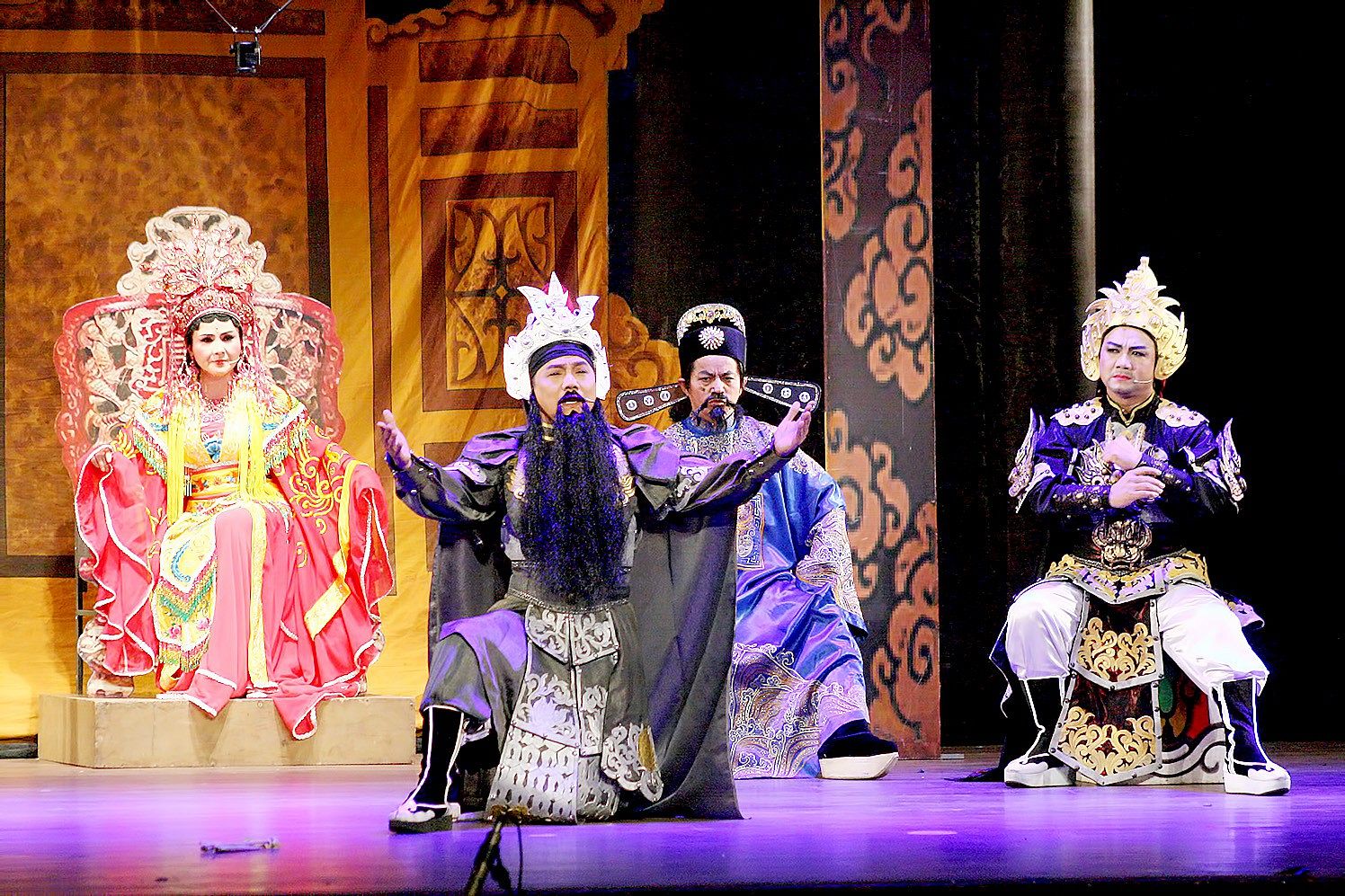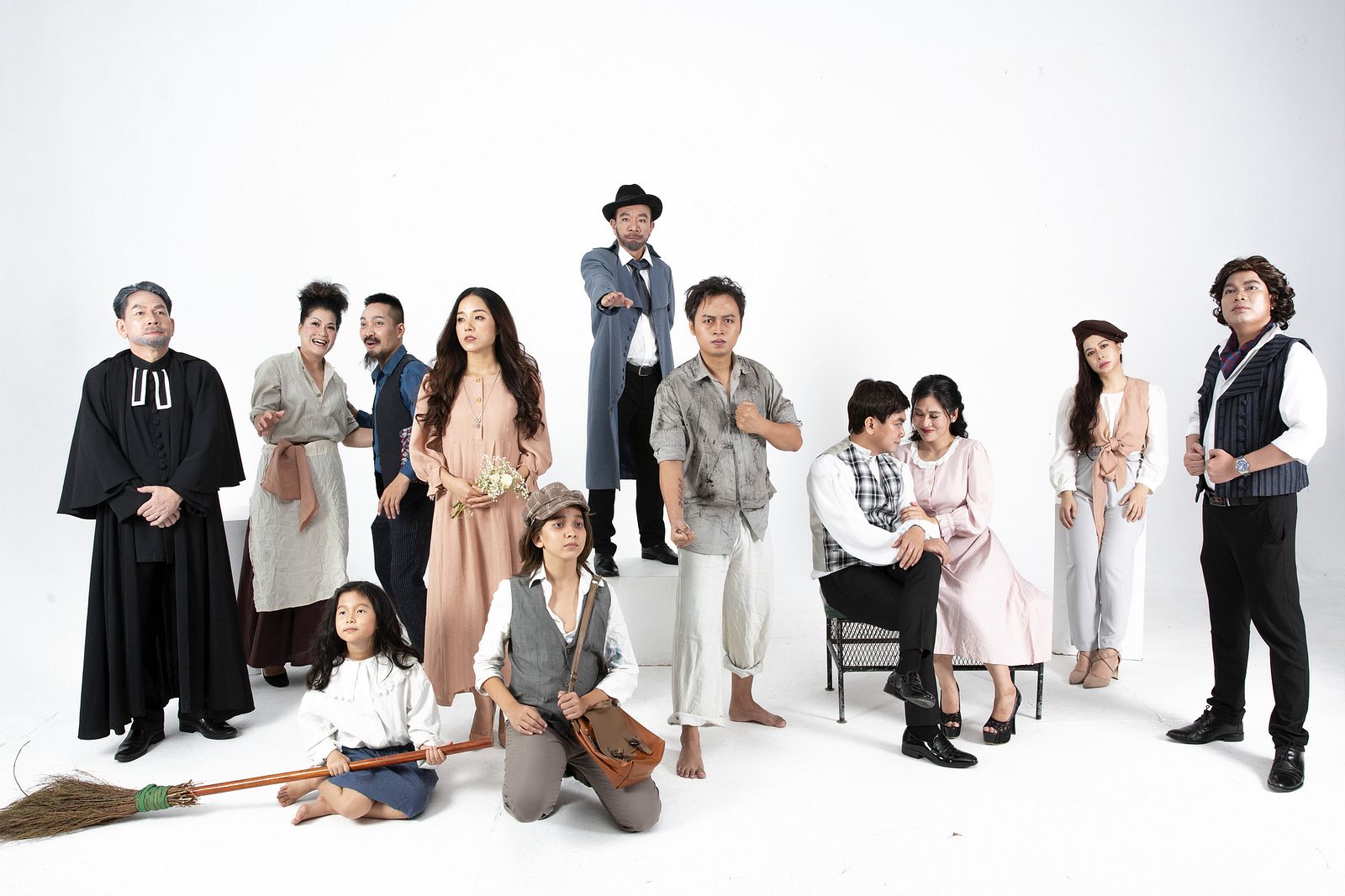“How would you like to see a performance of cải lương — traditional Vietnamese folk opera?” my local friend asked. “Great opportunity for photos, and I think we can go backstage.” Knowing my love of opera and photography, my response was an immediate “yes.”
Having grown up and lived in New York City, I attended many opera performances at the Lincoln Center, and was looking forward to this experience in my new city. I quickly did as much research as possible to gain an understanding of this uniquely Vietnamese form of entertainment.
The following Saturday evening, we found ourselves amidst a celebration at Hung Phu Temple in District 8 to witness a performance by the Kim Minh Cải lương troupe. Gentlemen dressed in peacock-blue áo daì graciously welcomed us by offering food and drink, along with access to photograph the ceremony in the shrine and the show that followed.


Emerging from the shrine, I faced a stage ringed with elaborate red embroidered curtains serving as a backdrop, creating a regal ambiance. A few of the actors were arriving and began their makeup and dressing in elaborate costumes, which can take up to two hours per character.
I should say that I had backstage access to the casts of both the New York City and Metropolitan Operas, and thus was used to star-studded dressing rooms. However, there were no such elaborate dressing rooms here. The actors grabbed whatever space afforded them to begin their pre-performance rituals. The female star, Tu Suong, was afforded a seemingly larger dressing area, where she was attended to by three women who dutifully fanned and otherwise assisted her.

Tu Suong’s dressing area with attendants.
But the organized chaos led to a sense of congeniality. I spent the next hour jockeying for position in the cramped quarters looking for the intimate shot without stepping in an actor’s dressing space.

By applying the stage makeup, the actor begins to transform into character.

A quiet moment backstage.

An actor covering his hair before donning the elaborate headdress.

No-frills makeup application.
When I emerged from the wings, the auditorium was packed with upwards of 200 people of all ages. The lights went down and a gentleman carrying three enormous candles paraded toward the stage. This was accompanied by the sonorous rhythms of the traditional trong đaidrums reverberating through the hall. The performance of Phàn Lê Huê (The Female Warrior) was about to begin.

A procession with large candles signified the start of the show.
Each character’s entrance was met with shouts and applause from the audience, more akin to seeing an operetta in Italy. Although I didn’t understand the language, the plot was evident and the costuming lavish.

Tu Suong in the female lead role.

A poignant duet between two of the female characters.

The female lead shows her power with swords.

Actors with elaborate peacock-feathered headdresses confront each other.

The male lead makes a dramatic entrance.

Footwear are part of the elaborate costume.

The jester acts as intermediary between female and male leads.
The history of cải lương extends back more than a century and is native to the Mekong Delta. It is derived from traditional Vietnamese opera, or hát bội, and principally tells social tales of heroism, romance and life of the times. The music seemed different to my ear, until my friend pointed out that cải lương is based on the pentatonic (five-note) scale. as opposed to the western heptatonic (seven-note) scale.
Cải lương’s popularity peaked in the 1960s and 1970s, and saw a decline after that era’s conflict. Today, however, it is making something of a comeback as a younger generation re-discovers heritage art forms. There is a need for new, updated scripts to make it more relevant to today’s audiences, but funding for these endeavors is still an issue.
So, after an exhilarating "night at the opera,” I now find myself in search of more cải lương performances while delving further into this unique Vietnamese performance art.
Top image: An actor peers from between the curtains after finishing his makeup.















